- 한국어
- English
- 日本語
- 中文
- العربية
- Español
- Français
- Deutsch
- Pусский
- Tiếng Việt
- Indonesian
By Honorary Reporter Toth Monika from Hungary
Photos= Choe Woosung
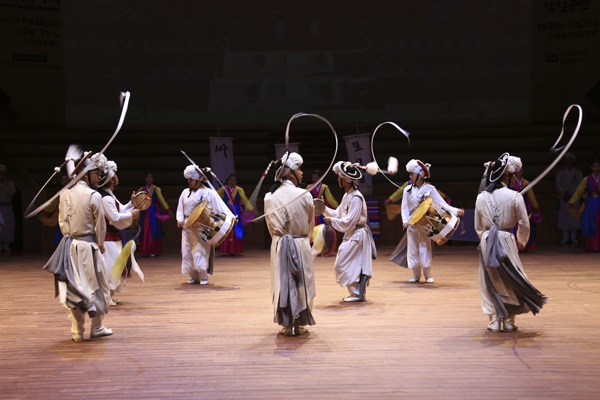
Pungmul nori (traditional folk music and dance performance)
A namsadang is an itinerant traditional performing arts troupe that does acrobatics, singing and dancing. The first such troupe is said to have formed before the 20th century during the Joseon Dynasty and wandered around markets and villages. The multifaceted folk performances of such groups are called namsadang nori (play or performance). Nori includes the performances of pungmul nori (musical instruments), samulnori (four musical instruments), sangmonori (long ribbon hat), beona nori (spinning hoops and dishes), salpan (tumbling), deotboegi (mask dance drama) and deolmi (puppets). Between the performances are additional acts such as oreum or jultagi (tightrope dancing).
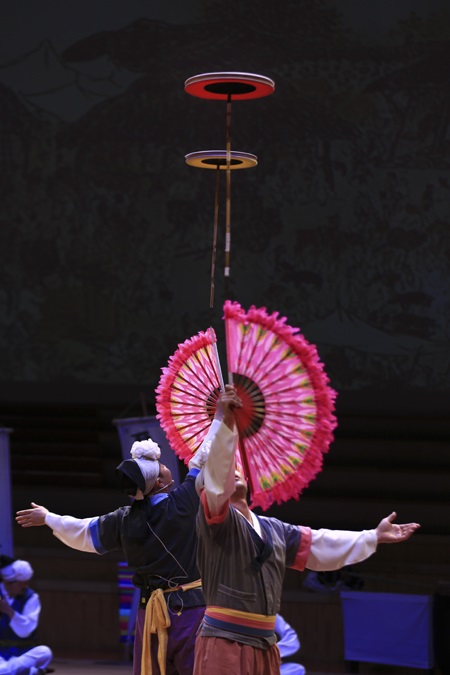
beona nori (spinning hoops and dishes)
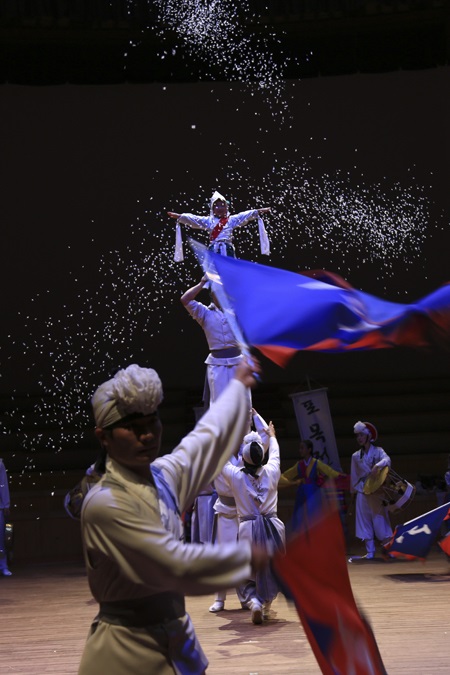
salpan (tumbling)
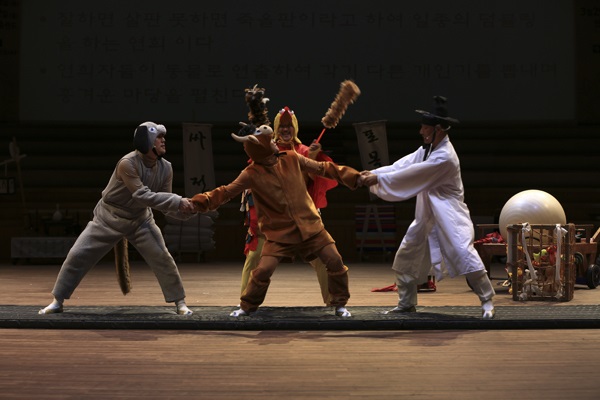
deotboegi (mask dance drama)
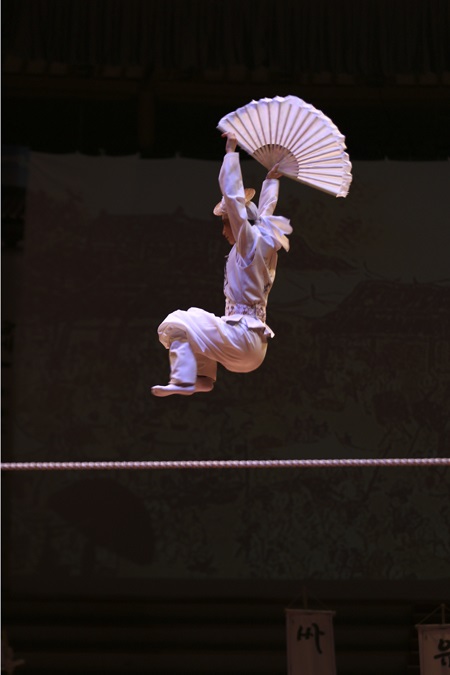
oreum or jultagi (tightrope dancing)
Members of such troupes occupied the lowest class in Joseon society, so few historical documents on them exist. Many do not know that namsadang in English literally means "all-male vagabond clown theater," as in no women allowed. Yet one pioneer broke through this barrier by becoming the first recognized female performer in a namsadang in the Joseon era: Baudeogi.
Information on Baudeogi was transferred orally and not through any written records. Born Kim Am-deok in 1848, she was the daughter of poor peasants who joined Anseong Namsadang at age 5 and began to travel the world. Her amazing performances and artistic talent soon earned her stardom. At age 15, she was unanimously elected leader of the troupe by her fellow members, an incredible anomaly since such groups were exclusively male territory. Her rise to the troupe's chief was because of her high popularity.
Baudeogi was also famous as a master tightrope walker at a young age through hard work. In 1865, Heungseon Daewongun, the regent of Emperor Gojong until his death, invited her troupe to the court to encourage workers rebuilding Gyeongbokgung Palace in Seoul. Her talent is said to have been so impressive, especially in playing the sogo (small drum), the regent gave her an okgwanja, a headband button made of jade beads that was at the time used only by high-ranking officials. From that moment on, her fame spread like wildfire nationwide. Tragically, she is said to have died at the young age of 23 in 1870 due to the tough life of a wandering performer. Her tomb is in Anseong, Gyeonggi-do Province, her birthplace as well as the site of her main stage while a member of her namsadang.
Since 2001, the annual Anseong Namsadang Baudeogi Festival has been held in honor of the performing pioneer. The event commemorates and preserves the cultural heritage and artistic spirit of Baudeogi as shown in namsadang nori through programs like the performances of all six types of namsadang nori.
Held every October, the festival in 2006 received official designation from UNESCO's International Council of Organizations of Folklore Festivals and Folk Arts.
chaey0726@korea.kr
*This article is written by a Korea.net Honorary Reporter. Our group of Honorary Reporters are from all around the world, and they share with Korea.net their love and passion for all things Korean.